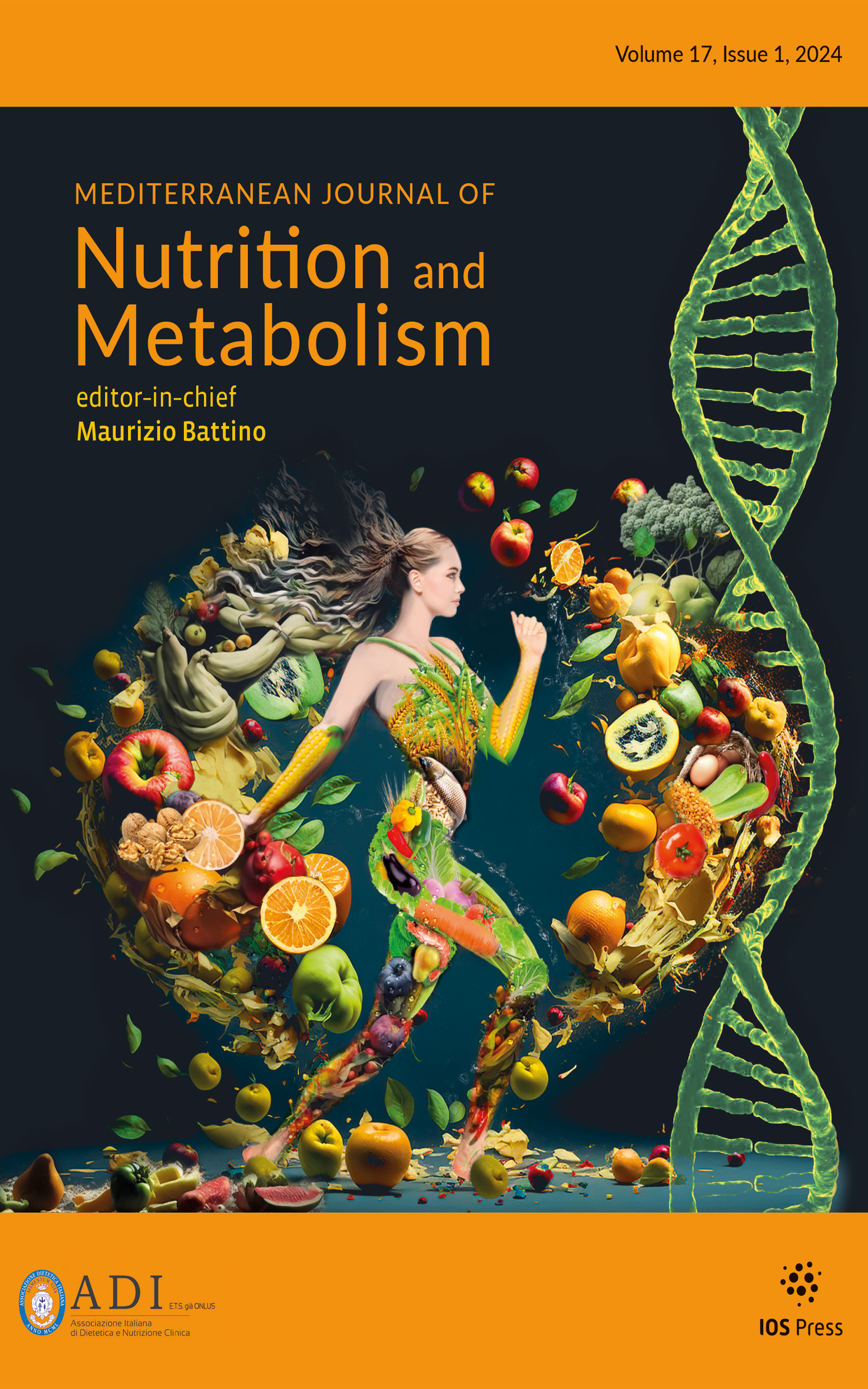Authors: Maghetti, A. | Cicero, A.F.G. | D’Ignazio, E. | Vincenzi, M. | Paolini, B. | Lucchin, L. | for the Italian Dietology Association (ADI) Eating Disorder Study group
Article Type:
Research Article
Abstract:
BACKGROUND: Orthorexia Nervosa (ON) is defined as a pathological fixation about the consumption of healthy food. ON doesn’t yet appear in the Diagnostic and Statistical Manual of Mental Disorders-V (DSM-V) as a nosological category, so that it remains a new controversial concept that affects mostly health care professionals. OBJECTIVE: The aim of our study was to evaluate the prevalence of orthorexia in a large sample of health care professionals involved in nutrition education (1240 subjects). METHODS: A masked form of the Orto-15 questionnaire, the main validated test for the screening of orthorexic patients, was administrated to
…the ADI members by e-mail. RESULTS: The total score is significantly lower in divorced people (than in married or unmarried people, p = 0.005), biologists (rather than medical doctors, p = 0.002), free-lances (than government employees, p = 0.020), smokers (than no smokers, p = 0.011) and in professionals following a diet (p < 0.001). The main score predictors are the marital status (B =−0.464, CI95% =−0.727 – −0.134, p = 0.007, divorced vs. other categories), BMI (B = 0.882, CI95% = 0.819–0.976, p = 0.012) and adherence to a diet (B =−2.200, CI95% =−6.066 – −1.819, p < 0.001 versus subjects with free diet). CONCLUSION: In this large sample, orthorexia seems to be quite widespread, especially among biologists, free-lances, divorced, smokers, dieting and thin subjects.
Show more
Keywords: Orthorexia, eating disorders, prevalence, health care professionals
DOI: 10.3233/MNM-140039
Citation: Mediterranean Journal of Nutrition and Metabolism,
vol. 8, no. 2, pp. 199-204, 2015





